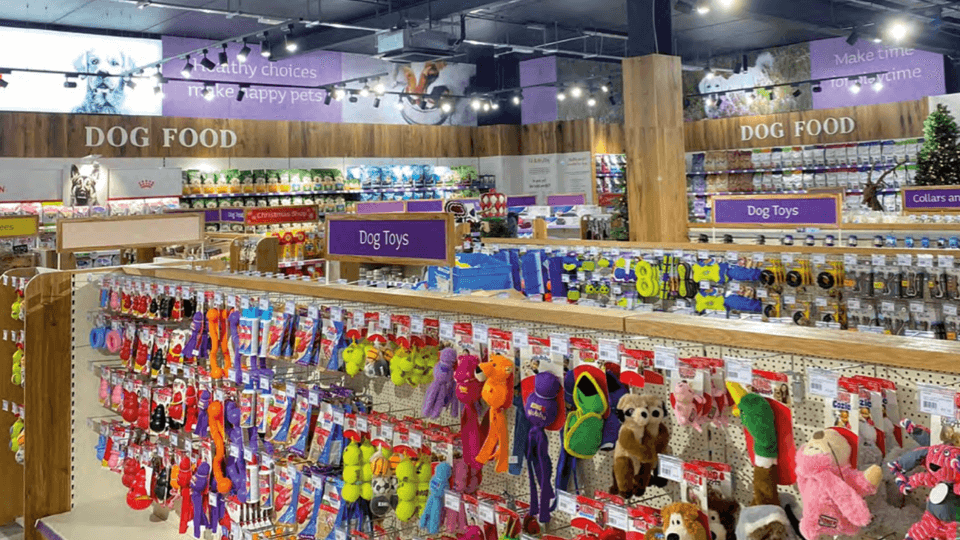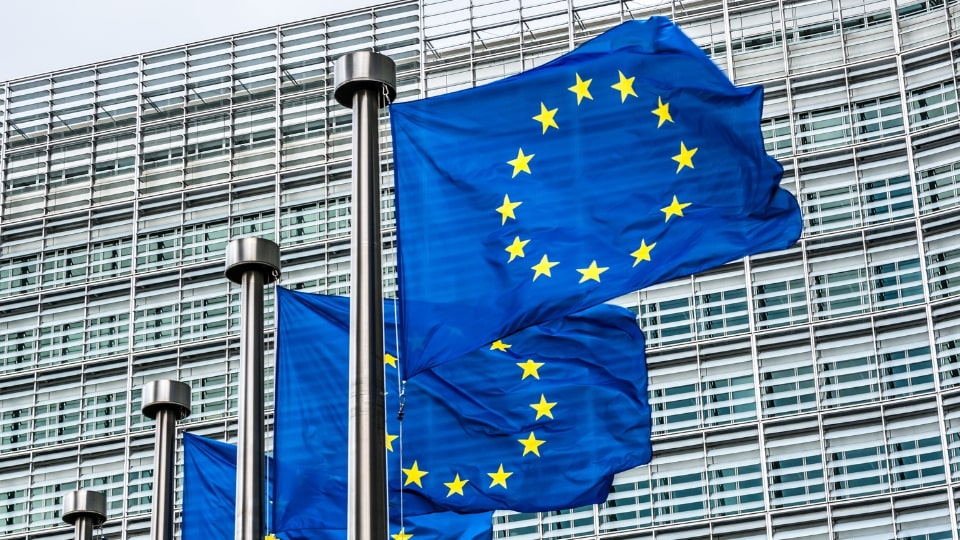
The global pet supplies market was already growing significantly year-on-year when the COVID-19 pandemic hit, sparking an increased enthusiasm for pets. Ireland was no different and Petstop has thrived.
Pandemic sales growth
Petstop has 200 employees, 8 stores and an online retail site, Petstop.ie, serving more than 20,000 customers a week. Those customers are each spending, on average, 20% more than they were prepandemic. The company has seen its annual revenue go from €10 million ($11.5 million) pre-pandemic to €30+ million ($35 million) today.
Director Anthony Gallagher wants to continue to grow the business – and increase its resilience – so that it can double that figure in the next two years.
Anticipating supply problems
Competition in the industry is fierce, and both Brexit and the pandemic have caused some supply problems. Before Brexit, a third of Petstop’s products came from the UK. Now, with importing proving harder, it is less than 10%.
Foreseeing import issues, Petstop wisely stockpiled many UK products before Brexit, giving the company a competitive advantage. Its ability to supply customers for longer contributed to its growth boom.
Carefully chosen product selection
Another factor in the company’s growth is its own brands: pet foods, including raw food, kibble and treats, alongside a few other items such as cat litter and dog beds. Over the last eighteen months, sales of those own brands have risen from 10% to 33%.
Petstop’s philosophy around the other brands it stocks and sells is simple: those products need to have specific benefits or USPs, such as a specific health claim, that it could not easily make with its own brands. That way, Petstop can offer a unique selection of products to its clients.
Excellent in-store service
The next factor in the company’s success is its stores. Petstop recognises that its Irish customers value good service and specialist advice, often more highly than cheap prices. That is why information and education are key in-store, ensuring customers feel well informed and confident about their purchasing decisions.
Point of sale displays explain product benefits, and how and why products differ in features and price. Further support comes from Petstop’s highly experienced and knowledgeable staff, many of whom have been with the company since it launched 25 years ago.
Planned for 2021-2023
- Opening four more stores, as well as in-store kitchens to produce fresh treats and dinners for dogs.
Responding to market trends
A final factor in the company’s success is responding to market trends:
Premium products
Numerous reports have shown that increased numbers of new pets have been acquired since the start of the pandemic. Pet owners are not only spending more on their pets, but are giving more priority and thought to that spend too. Three years ago, many of Petstop’s top sellers were budget products. Now, those products are very difficult to sell, and demand is higher for premium goods. Petstop’s current top-selling food is their own brand, 50% more expensive per kilo than their previous top-selling food.
Planned for 2021-2023
- Increasing own brand product lines and sales, so that 50% of stocked products and 70% of treats are own brand, ensuring consistent supply and higher profitability.
Sustainability and wellness
The ethical, environmental and health trends in human foods and purchasing are impacting demand and spend in the pet market. There is a growing preference for natural, organic, free-from and locally sourced foods, sustainably produced and presented in eco-friendly packaging. These factors make Petstop’s locally produced food and raw foods even more desirable.
Planned for 2021-2023
- Increasing sustainable and natural product lines
- No longer importing rawhide treats from China, and focusing on locally produced treats.
- Reducing packaging and using more biodegradable packaging.
Looking to sell to the Irish market?
It is estimated that five years ago, 75% of goods in the Irish pet market sold through supermarkets, and 25% through specialised pet stores. Today, the market split is around 50/50, indicating that people are seeking more advice, choice and premium options.
Gallagher says that it is also wise to consider the growing shift to online purchasing, accelerated by the pandemic. Pre-pandemic, 9% of Petstop’s sales were online and 91% via stores. That split is now around 70/30, and he predicts it will be 50/50 in the future. His online customers are spending 50% more than those in-store.
Two top tips
- In this super-competitive market, USPs have become more important than ever. The services and products offered need to be strongly differentiated.
- It is vital to develop relationships with staff and customers to better understand what they need.
By foreseeing and preparing for issues, and responding to customer needs and market trends, Petstop has stayed ahead of the game. Despite some challenges, it has remained resilient, and provides a great blueprint for success in the Irish market.
The latest articles

How pet parents will shop for their pets this Christmas
A new survey takes the pulse on holiday shopping trends in the UK, including popular categories and average spending.

General Mills’ pet portfolio posts negative performance
Both revenue and net sales dropped by 4% in the last quarter amid less demand.

Negotiations of new EU rules on sustainable packaging to kick off in 2024
The Council and the Parliament will start the legislative process to design regulations regarding the packaging and packaging waste proposal put forward by the European Commission last year.
Weekly newsletter to stay up-to-date
Discover what’s happening in the pet industry. Get the must-read stories and insights in your inbox.